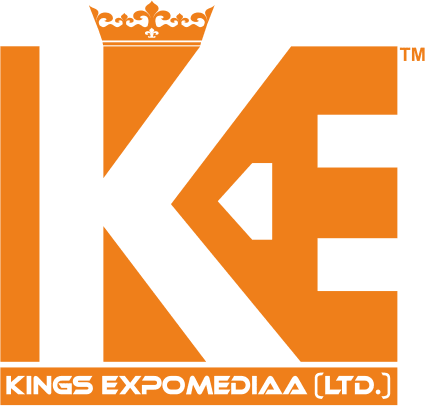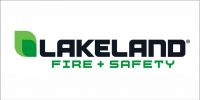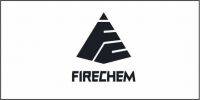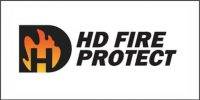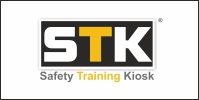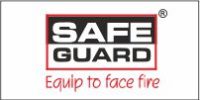 Protective footwear represents a critical element of personal protective equipment (PPE) across industrial sectors such as construction, energy, warehousing, logistics, and manufacturing. The feet are highly susceptible to a wide range of occupational hazards, including falling objects, punctures, electrical shocks, slips, and exposure to temperature extremes. As such, regulatory agencies including the Occupational Safety and Health Administration (OSHA) and standards organizations such as ASTM International have established rigorous guidelines to ensure that employers and manufacturers implement appropriate safety measures. A technically sound understanding of these requirements—and their practical implications—is vital for developing a compliant and effective foot protection program that minimizes risk and enhances workforce resilience.
Protective footwear represents a critical element of personal protective equipment (PPE) across industrial sectors such as construction, energy, warehousing, logistics, and manufacturing. The feet are highly susceptible to a wide range of occupational hazards, including falling objects, punctures, electrical shocks, slips, and exposure to temperature extremes. As such, regulatory agencies including the Occupational Safety and Health Administration (OSHA) and standards organizations such as ASTM International have established rigorous guidelines to ensure that employers and manufacturers implement appropriate safety measures. A technically sound understanding of these requirements—and their practical implications—is vital for developing a compliant and effective foot protection program that minimizes risk and enhances workforce resilience.
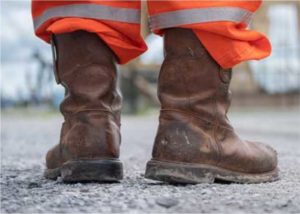 According to OSHA Standard 29 CFR 1910.136, employers are obligated to ensure that each affected employee uses protective footwear when working in areas where there is a danger of foot injuries due to falling or rolling objects, objects piercing the sole, or when there is potential exposure to electrical hazards. This requirement underscores that protective footwear serves as a supplementary control measure, safeguarding employees after engineering and administrative controls have been applied. Employers must identify job-specific risks, select appropriate footwear, and enforce its consistent use as part of a comprehensive hazard management system.
According to OSHA Standard 29 CFR 1910.136, employers are obligated to ensure that each affected employee uses protective footwear when working in areas where there is a danger of foot injuries due to falling or rolling objects, objects piercing the sole, or when there is potential exposure to electrical hazards. This requirement underscores that protective footwear serves as a supplementary control measure, safeguarding employees after engineering and administrative controls have been applied. Employers must identify job-specific risks, select appropriate footwear, and enforce its consistent use as part of a comprehensive hazard management system.
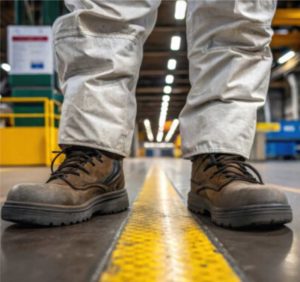 To ensure uniform safety performance, OSHA incorporates by reference specific ASTM standards governing the design and testing of protective footwear. Two key standards are ASTM F2412-11, Standard Test Methods for Foot Protection, and ASTM F2413-11, Standard Specification for Performance Requirements for Protective (Safety) Toe Cap Footwear. ASTM F2412-11 details the laboratory test methods used to assess properties such as impact resistance, compression resistance, puncture resistance, and electrical hazard protection. Meanwhile, ASTM F2413-11 defines the minimum performance criteria that protective footwear must meet, including protective toe caps, metatarsal guards, static dissipative (SD) properties, conductive (CD) protection, and electrical hazard (EH) resistance. Footwear compliant with these standards must be permanently marked to denote the type of protection provided, ensuring traceability and verification during safety audits. For example, markings such as “I/75 C/75 EH” indicate compliance with impact resistance (75 foot-pounds), compression resistance (2,500 pounds), and electrical hazard protection requirements.
To ensure uniform safety performance, OSHA incorporates by reference specific ASTM standards governing the design and testing of protective footwear. Two key standards are ASTM F2412-11, Standard Test Methods for Foot Protection, and ASTM F2413-11, Standard Specification for Performance Requirements for Protective (Safety) Toe Cap Footwear. ASTM F2412-11 details the laboratory test methods used to assess properties such as impact resistance, compression resistance, puncture resistance, and electrical hazard protection. Meanwhile, ASTM F2413-11 defines the minimum performance criteria that protective footwear must meet, including protective toe caps, metatarsal guards, static dissipative (SD) properties, conductive (CD) protection, and electrical hazard (EH) resistance. Footwear compliant with these standards must be permanently marked to denote the type of protection provided, ensuring traceability and verification during safety audits. For example, markings such as “I/75 C/75 EH” indicate compliance with impact resistance (75 foot-pounds), compression resistance (2,500 pounds), and electrical hazard protection requirements.
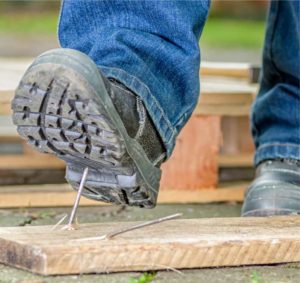 Beyond ASTM and OSHA specifications, several other attributes—while not covered by standardized testing—play a crucial role in occupational foot protection. As highlighted by industry experts such as Wolverine’s Roger Huard, these include waterproofing, insulation for cold environments, and slip resistance. Waterproof materials, whether full-grain leather, treated synthetics, or membrane linings, prevent moisture penetration and fungal infections. Insulation properties are essential for workers operating in extreme temperature environments, such as outdoor construction or oilfield operations. Slip resistance, evaluated through friction coefficient testing, minimizes the risk of falls on oily, icy, or wet surfaces—one of the most frequent and costly categories of workplace accidents.
Beyond ASTM and OSHA specifications, several other attributes—while not covered by standardized testing—play a crucial role in occupational foot protection. As highlighted by industry experts such as Wolverine’s Roger Huard, these include waterproofing, insulation for cold environments, and slip resistance. Waterproof materials, whether full-grain leather, treated synthetics, or membrane linings, prevent moisture penetration and fungal infections. Insulation properties are essential for workers operating in extreme temperature environments, such as outdoor construction or oilfield operations. Slip resistance, evaluated through friction coefficient testing, minimizes the risk of falls on oily, icy, or wet surfaces—one of the most frequent and costly categories of workplace accidents.
In addition to the footwear itself, ergonomics and fit are crucial. Ill-fitting footwear can lead to fatigue, blisters, or musculoskeletal strain, reducing productivity and increasing the likelihood of incidents.
Employers should therefore include proper fitting procedures and worker education as part of their PPE programs. Periodic inspections must also be conducted to identify wear, sole degradation, or compromised protective features, as damage can render even certified footwear noncompliant.
The economic and compliance responsibilities associated with protective footwear have also been clarified. OSHA’s May 2008 final rule on employer payment for PPE mandates that employers must pay for specialty protective footwear—such as metatarsal guards, rubber boots with steel toes, or other task-specific designs—when required solely for work purposes. However, employers are not required to pay for non-specialty safety toe footwear (e.g., standard steel-toe boots) if employees are permitted to wear them off-site. This distinction underscores the importance of employer policy documentation and communication to avoid compliance disputes during inspections.
The consequences of inadequate foot protection are significant. Bureau of Labor Statistics (BLS) data indicates that fractures and lacerations are common among workers in construction, warehousing, and transportation. Foot injuries alone account for a median of five lost workdays per incident, while ankle injuries result in a median of nine days lost. Furthermore, foot fractures represent approximately 10 percent of all bone fractures reported in the United States, often resulting from crushing impacts, dropped objects, or falls from height. However, impact hazards are only part of the risk profile—workers must also be shielded from slips, electrical shocks, and thermal extremes through properly selected footwear.
Nail gun incidents provide an illustrative example of secondary foot and leg hazards. More than half of nail gun injuries involve the hands and fingers, but a significant proportion affect the legs, knees, feet, and toes. The use of full sequential trigger mechanisms instead of contact or single-actuation triggers significantly reduces the risk of unintended discharges. Effective safety programs must incorporate tool-specific training, hazard recognition, and PPE enforcement to mitigate these injury patterns. Safety training should emphasize understanding the causes of injuries, manufacturer instructions, and the importance of PPE, while also covering first aid, incident reporting, and medical response procedures.
Canadian authorities such as WorkSafeBC provide additional guidance that complements OSHA and ASTM standards. Their recommendations highlight employer responsibilities in conducting risk assessments, consulting manufacturer data, and ensuring proper footwear certification and maintenance. By leveraging both U.S. and Canadian best practices, multinational organizations can establish harmonized safety protocols that exceed baseline compliance.
Ultimately, protective footwear must be viewed as one component of a comprehensive occupational safety management system. While PPE provides the last line of defense, true risk reduction comes from an integrated approach that begins with hazard identification, engineering controls, administrative safeguards, and continuous worker training. Safety committees and employee engagement programs enhance compliance and cultivate a proactive safety culture. Preventive maintenance of PPE, coupled with ongoing evaluation of new materials and technologies, ensures continuous improvement in protection standards.
In conclusion, maintaining a compliant and effective safety footwear program requires alignment with OSHA 1910.136, ASTM F2412-11, and ASTM F2413-11 standards, while also considering environmental, ergonomic, and task-specific factors. Employers must adopt a structured approach encompassing hazard assessment, product selection, training, and lifecycle management. Protective footwear, when properly chosen, maintained, and integrated into a broader safety system, not only prevents injuries but also supports operational efficiency and workforce well-being—putting industries, quite literally, on their best-protected feet forward.
